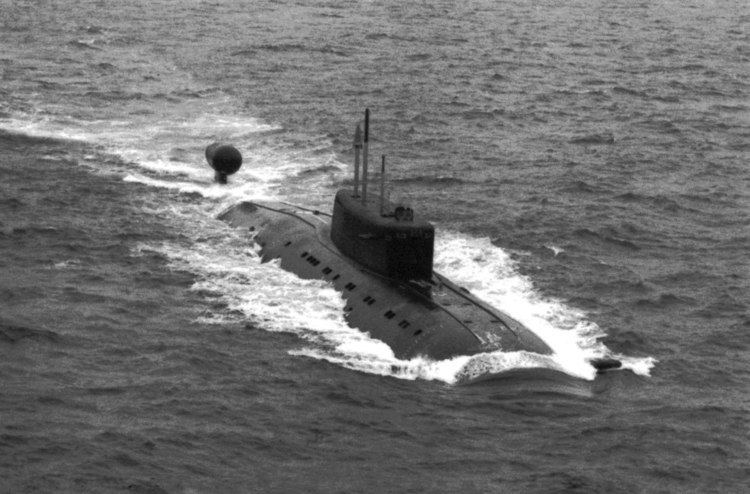Preceded by Alfa class submarine Completed 4 | Succeeded by Akula-class submarine Active 3+1 in overhaul | |
 | ||
Operators | ||
The Sierra I class (NATO reporting name) or (Soviet design serial number) Project 945 (Барракуда/Barrakuda) nuclear submarine was the Soviet Union's successor class to the partly successful Project 705 Lira (Alfa) class submarine. The Sierra class has a light and strong titanium pressure hull which enables the class to dive to greater depths, reduce the level of radiated noise and increase resistance to torpedo attacks. It is powered by a single OK-650 pressurized water reactor. Sierra I and its successor Sierra II classes submarines are designed by Lazurit Central Design Bureau.
Contents
The Sierra II class (NATO reporting name) or Project 945A (Кондор/Kondor) nuclear submarine was a successor to the Sierra I with improved quieting and sonar. The Sierra II was specifically developed for search and destroy missions against US nuclear submarines. It has a smaller turning circle than any other modern submarine, with speeds and diving depth greater than its American counterparts.
Sierra I
The first hull, Karp, was laid down in May 1982 at the Gorky shipyard and was launched in August 1983 before being transferred to Severodvinsk for fitting out. It was laid up in 1987. The next hull to be built was the Kostroma, which was launched in July 1986 and was commissioned in September 1987. K-276 Kostroma was put into a drydock after its February 11, 1992 collision with USS Baton Rouge (SSN-689) in the Barents Sea, off Kildin Island. The submarine was repaired on 3 June 1992 and was renamed Krab on 6 April 1993, but in 1996 its original name, Kostroma was returned and it is in active service with the Russian Northern fleet. The Sierra I class was also fitted with a releasable escape pod for the crew. The pod is covered by a V shaped casing on the port side of the sail.
On March 5, 2013 the Russian news agency Izvestiya reported that the Russian Navy has decided to return Hull 1 Karp and Hull 2 Kostroma to service. The necessary upgrade work is expected to take 3 years and will be carried out at Severodvinsk. In March 2015 it was reported that the final decision on the modernization of submarines Carp and Kostroma has yet to be made due to cost issues.
Submarines in class: Plan to upgrade the two ships on the CA "Zvezdochka" on the project 945M
Sierra II
The Sierra II (Project 945.A - Кондор/Kondor) class has a considerably larger sail which is 5 m (16.4 ft) longer than the Sierra I type. The sail also has a curious flat, square leading edge. The masts are offset on the starboard side to make way for two escape pods in the sail. The starboard side also has a 10-point environment sensor fitted at right angles to the front end of the sail. Also, the Sierra II type has a much larger pod on its after fin. The pod houses the Skat 3 passive very low frequency towed array.
In October 2012 a Sierra II class submarine deployed to the North Atlantic and carried out a patrol off the US East coast.
Submarines in class: Plan to upgrade the two ships on the CA "Zvezdochka" on the project 945M
Sierra III (provisional)
The sole possible Sierra III/Project 945AB (Mars), was laid down in March 1990 but was scrapped in November 1993 before completion.
